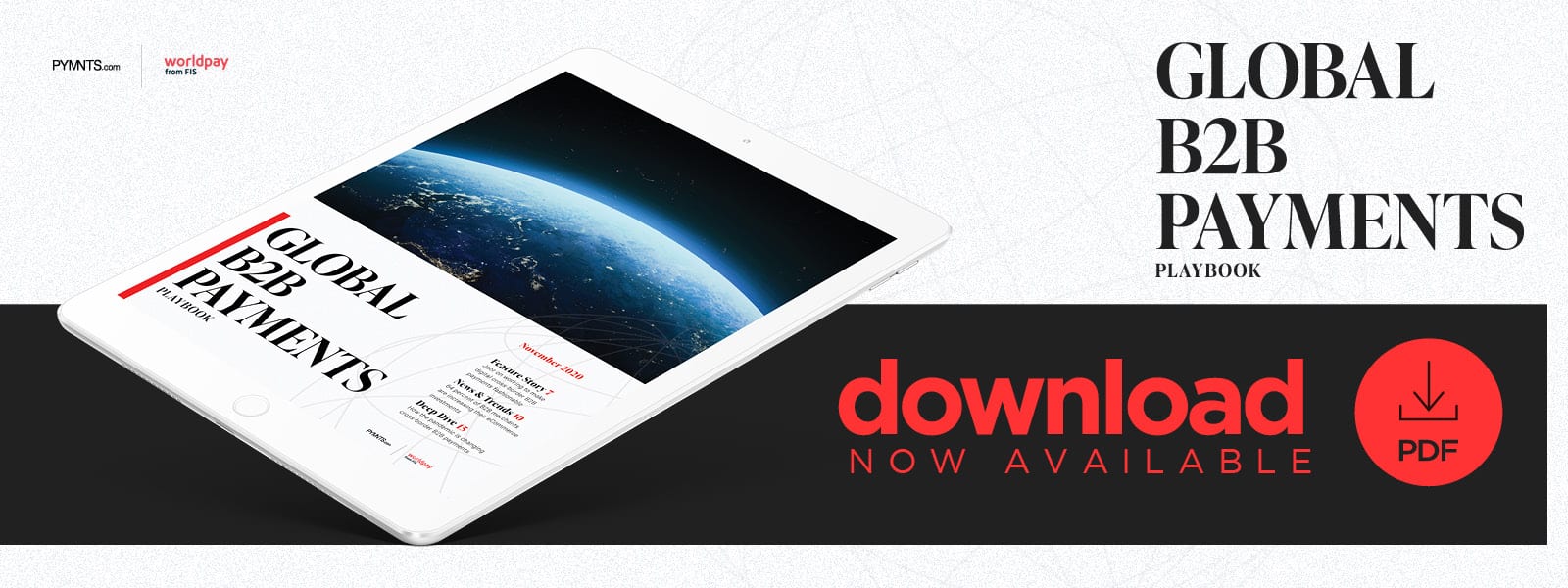Deep Dive: Why Businesses Are Seeking New Technologies To Optimize Cross-Border B2B Payments During The Pandemic

The cross-border B2B payments space experienced a small drop in growth during the first half of 2020 due to the COVID-19 pandemic’s effects, but it is expected to continue expanding despite this hiccup. One recent report projected that the value of B2B cross-border transactions would reach $27 trillion by the end of 2020 — below initial estimates — but will likely hit $35 trillion in 2022. This 30 percent growth rate may be modest but is welcome news for the companies that are turning to international markets for suppliers, business partners and employees. Firms making cross-border moves must also be capable of facilitating swift and seamless cross-border payments, and the health crisis appears to be adding challenges on top of the many that already existed.
Many firms still process cross-border transactions through wire transfers. This payment method sometimes requires senders to fax paper invoices to recipients, presenting numerous issues during the current business climate, in which more employees are working from home. Interest in instant payment rails and digital payment solutions is also growing as companies and workers expect to more quickly receive their funds, and failing to offer this speed can prove frustrating or even unsustainable when collaborating internationally. Technologies such as automation and blockchain are thus receiving more attention from businesses, especially as the volume of data that accompanies cross-border transactions expands.
The following Deep Dive explores how the pandemic is affecting the cross-border B2B payment challenges that businesses face and changing the ways they can accept or make such transactions. It also analyzes these shifts’ impact on future international B2B payments.
Exacerbating Old Challenges
The global health crisis is aggravating existing cross-border B2B frictions while also adding new ones. Speed and security have always been a priority for firms in this space, but the pandemic is placing added weight on these considerations. A large portion of cross-border B2B transactions are sent via wire transfers: 69 percent of businesses tapped this method for cross-border payments in 2019. Many firms were reconsidering the method for its cost, speed and security well before the health crisis began, making it likely that these concerns have only deepened.
Businesses are also keeping a closer eye on their cash flows to stay afloat during the pandemic, meaning the routine price fluctuations that often accompany cross-border B2B transactions are now even more frustrating. Various factors, including the dynamics of the markets in which transactions take place and the payment amounts being sent, can shift wire transfers’ costs. These payments can also fail to arrive quickly enough for firms facing dire economic situations during the health crisis, as funds generally take between three and five days to settle in recipients’ bank accounts.
The growing threat of fraud is perhaps the most critical adversary businesses are confronting during the pandemic. Much of the time involved in sending wire transfers stems from businesses verifying recipients’ financial details, as failing to get them right can cause funds to be sent to wrong accounts or to bad actors capitalizing on pandemic-related disruptions. Fraud scams targeting these wire transfers have long been an issue, with U.S. companies losing roughly $1.77 billion to business email compromise (BEC) scams last year, for example, and global businesses losing approximately $26 billion between June 2016 and July 2019.
Fraudsters perpetrating these schemes send emails that convince firms to wire money into fraudulent accounts. The FBI warned companies during the pandemic’s earlier months that BEC scams were becoming more common and that failing to combat them could drive up costs, lead to breaches and ruin business relationships. Many businesses must accommodate employees’ and international partners’ evolving needs despite these hurdles. Some are therefore considering new technologies that can help them make cross-border B2B payments smoother and more secure.
The Pandemic And Changing B2B Needs
Businesses are exhibiting interest in several tools and payment processes that could address wire transfers’ weak points, including automated technologies that help companies examine all details attached to transactions with more speed and transparency. This would mean pairing technology that can send this data in real-time alongside payments sent via real-time networks, for example. Automation and technologies like blockchain are gaining momentum, with several card networks and payment processing firms offering blockchain-enabled solutions that can boost security and reduce transaction times.
However, interest does not necessarily indicate adoption. The use of such technologies is expanding, but making these solutions feasible requires businesses’ partners to accept them, and different markets have distinct rules governing these payments and how the attached data must be handled. Blockchain must also see broad adoption to be effective, and both it and automation cannot reach their full potential if businesses’ partners still rely on legacy wire and paper-based transactions.
Firms doing business internationally must optimize their cross-border B2B payment processes to stay competitive during the pandemic and be positioned for continued success once it has ended. The challenge is not in finding available solutions but in implementing them effectively. Deciding which tools are best suited to companies’ and their international partners’ payment needs could be key to helping them survive the pandemic and thrive after it ends.

